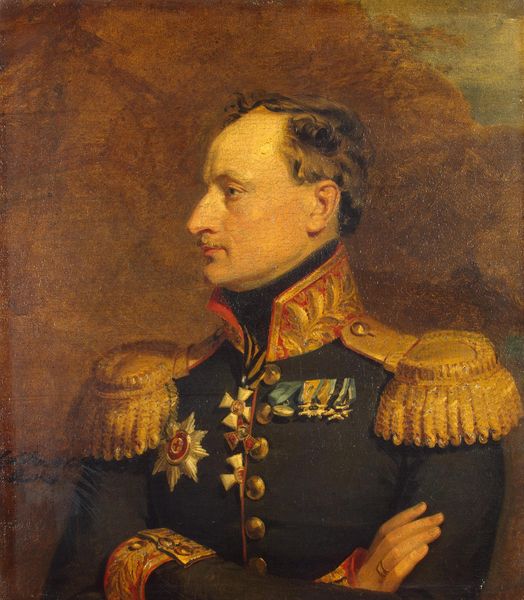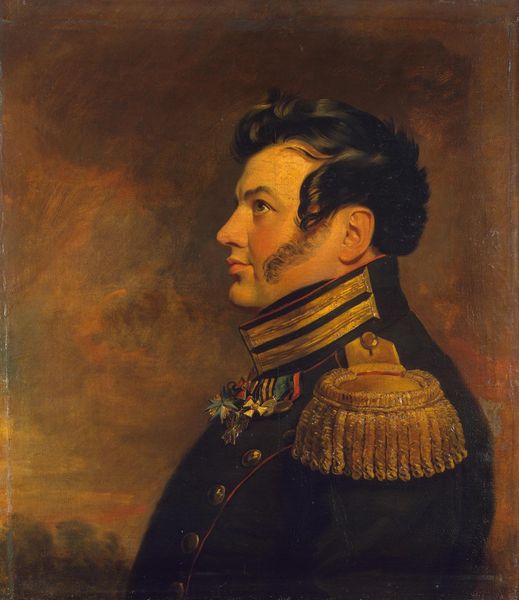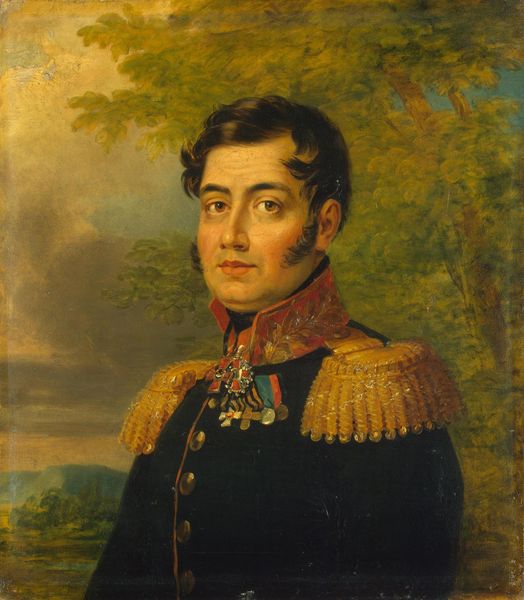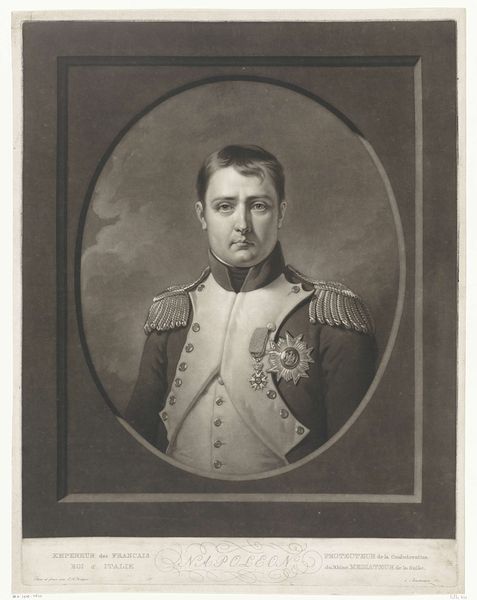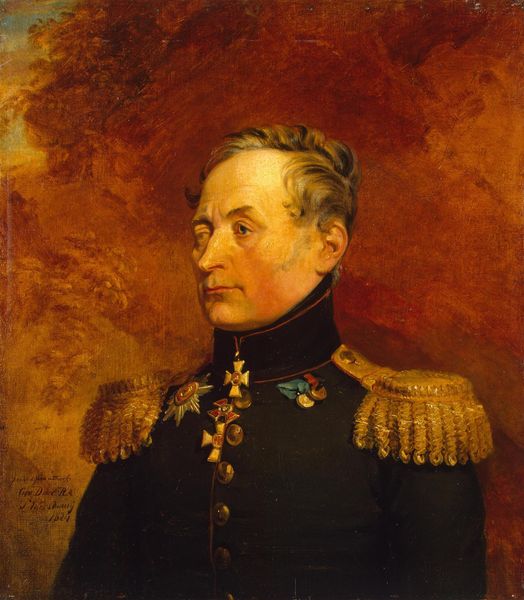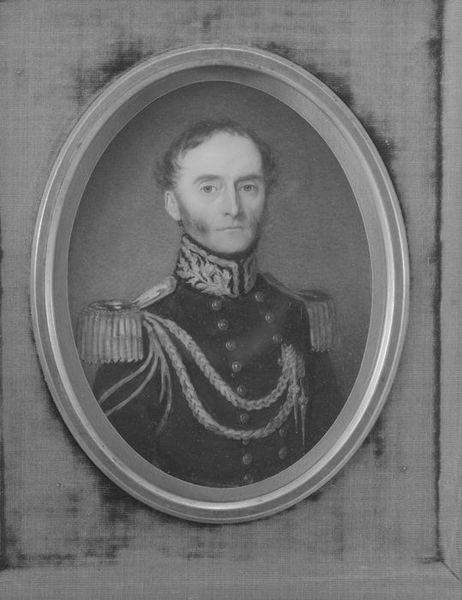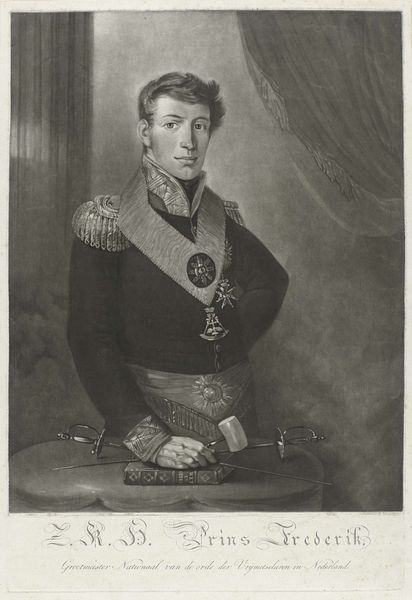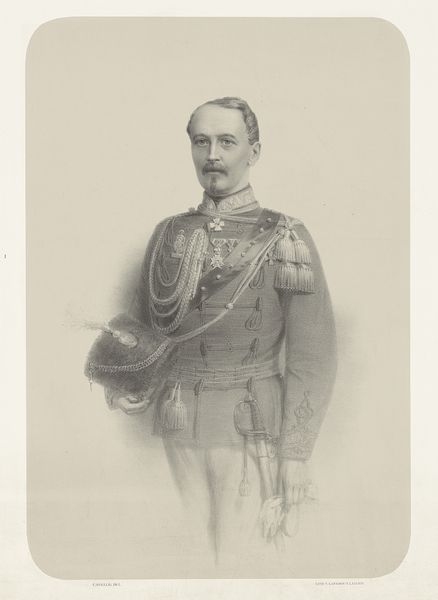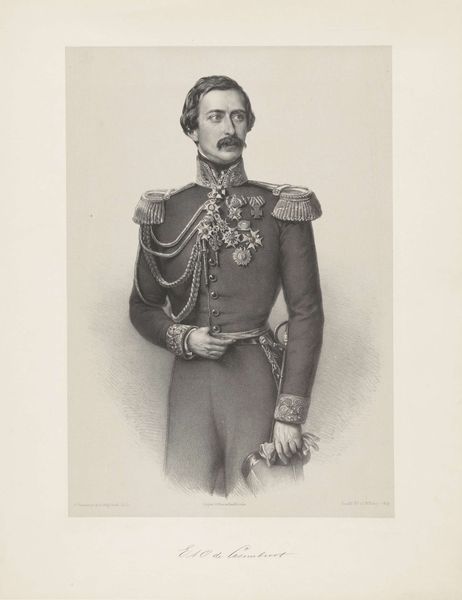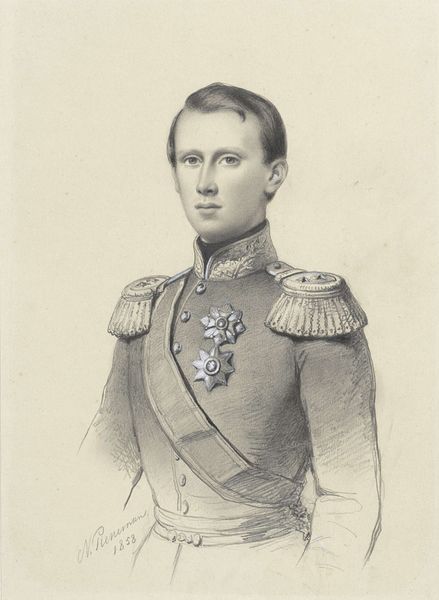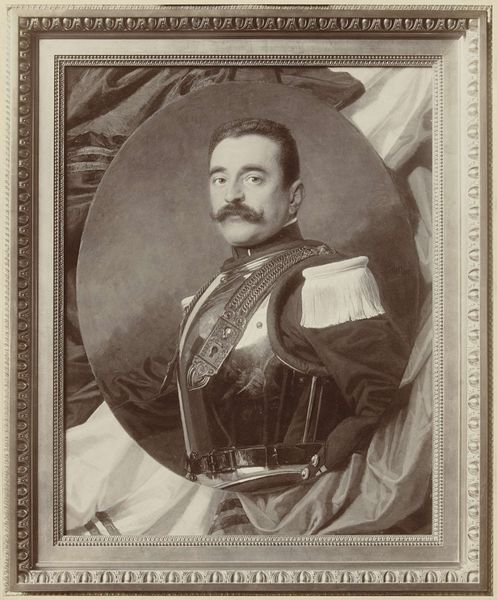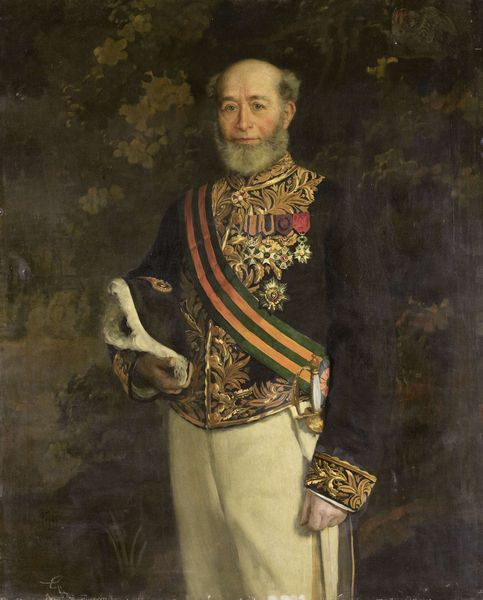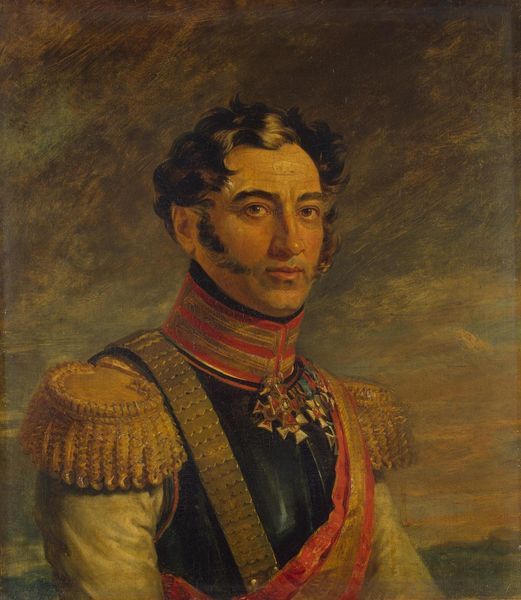
painting, oil-paint
#
portrait
#
painting
#
oil-paint
#
romanticism
#
history-painting
#
academic-art
#
realism
Copyright: Public domain
Curator: Up next is Konstantin Makovsky's "Portrait of the Count G. Bobrinsky." Editor: It's immediately striking, isn't it? So rich in detail and texture. The gold trim against the dark uniform is quite impressive and dominates the piece. Curator: Absolutely. The painting likely reflects the Count's standing within the Russian Imperial court, where image was everything and portraiture served to solidify social hierarchies. Makovsky was a sought-after portraitist within those circles. Editor: It certainly telegraphs authority and importance. Speaking of visual hierarchies, I can't help but notice how the meticulous detail given to the ornamentation of the uniform pulls focus from the Count’s face, almost dehumanizing him. The artist, whether intentionally or not, has reduced the Count to simply a status symbol. Curator: That's a compelling observation. While the uniform undeniably signifies rank and affiliation, it's important to acknowledge how artists like Makovsky navigated the demands of their patrons within a system that valued visual displays of power. This kind of romanticized realism reinforced their vision of themselves and the existing social order. Editor: That is certainly reflected here in this painting. Although his gaze is direct, it's also quite vacant and unreadable. Is that due to constraints placed upon Makovsky? Or perhaps we are supposed to "read" the man through the embellishments around him? Curator: It is probably some of both. Makovsky was also trying to reflect his understanding of romantic ideals about Russian history. These details weren’t simply about surface-level aesthetics; they actively created the narrative of legacy, honor, and privilege. Editor: And he very effectively used techniques of academic art to get that message across. Ultimately, what are we to think about such potent displays of power? Does this work now become simply an emblem of a bygone era? Curator: That's precisely the power of historical portraiture; it allows us to understand how societies present themselves and the subtle ways in which the dynamics of power are made visible – or masked. Editor: Precisely, making this a striking, albeit uneasy, spectacle to observe.
Comments
No comments
Be the first to comment and join the conversation on the ultimate creative platform.
